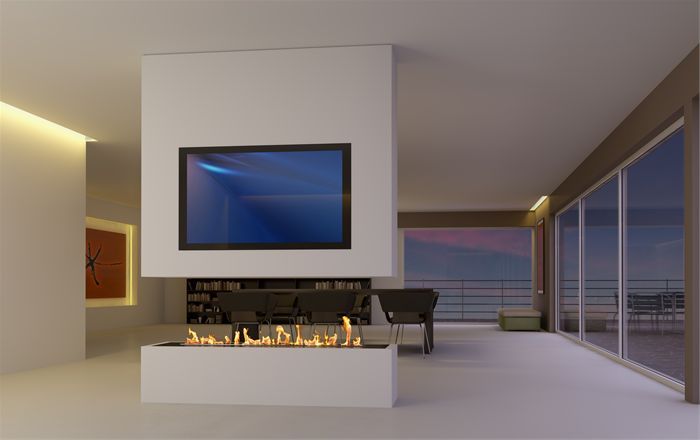Passive houses are becoming increasingly popular as we try to preserve the environment with green builds. As passive houses aren’t built as a traditional home, we receive a lot of questions when it comes to installing a fireplace inside a passive house.
Traditionally, customers wish to install a wood-burning stove. While this solution can work, a Danish study shows that wood-burning stoves are not an ideal solution for passive homes (you can read an english summary and conclusion inside the study).
The study concluded that:
The heat-contribution from wood-burning stoves were unnecessary
The heat conflicts with floor-heating
Wood-burning stoves has an increased particle pollution
As you might realize after reading the above, wood-burning stoves are not the perfect match with the nature of passive houses. These modern builds require very little heat, and thus too much heat becomes a problem.
A wood-burning stove produce around 6kW heat, and the study illustrated that only around 2 kW was desirable.
Besides excessive heating, the study showed that the stoves in the tested homes created problems for the floor heating. As a primary heat source, floor heating is slow when it comes to adapting to an increase or decrease in room temperature. Consequently, the room temperature can become inconsistent with both too much and too little heat.
That’s exactly why more new builds include ethanol fireplaces. With a heat output average of 2-3kW, the level of heating matches the nature of a passive house.
Increased particle pollution
Besides problems with the heat regulation, wood-burning stoves caused another problem. When opening the door to put more logs on the fire, a negative pressure force out an increased amount of particle into the room.

As a result, the passive house is exposed to larger volumes of particles than traditional homes. This is a direct result of the tight isolation that these new builds are characterized by.
So are wood-burning stoves not good for Passive homes?
In most of the cases they won’t be a good fit. The recommendation in the study is to select a smaller unit as a customer. Unfortunately, there are not a lot of wood-burning stoves that produce only 2-3kW heat. And with that said, you’ll still have the problem with particles.
As a result of this study, I believe that ethanol fireplaces are a good alternative to wood-burning stoves in passive houses.
The benefits are clear:
No particle pollution
A heat output that match the prerequisites of the home
No chimney required making installation easy and economical

With all that said, you need to find the right ethanol fireplace for your home. Some models can produce as much as 5 kW heat per hour. Make sure to look for a model that produces around 2 kW in order to avoid excessive heating.
Also note that an open flame will consume oxygen while burning, as a result a CO detector is a good idea to install together with an ethanol fireplace. Our recommendation, if the space is small, is to ensure a steady flow of fresh air through a vent or an open window.
A final note, please remember that there is currently limited regulation of ethanol fireplaces. As a result, I always recommend selecting a model that has been tested and certified by independent organizations such as SP Sitac, Swedcert or TÜV.
